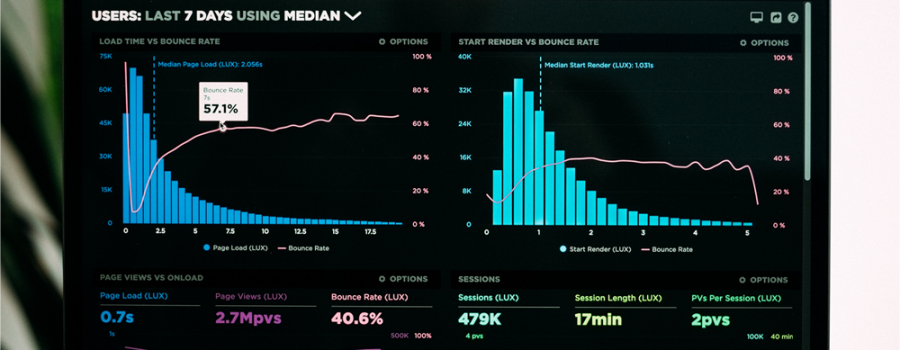5 Mistakes To Avoid When Picking MailChimp Alternative

Newsletters are a huge revenue generator for businesses. A good mailing list can generate 50%-90% of your sales for any given month. Yes, you read that right, fifty to ninety percent of your sales.
And. that. is. a. big. deal.
Yet, we’ve become complacent with newsletter solutions like MailChimp. They’re cash cows, but they’re starting to get outdated. With more and more companies having newsletters, a higher percentage are getting ignored by users. They are unpersonalized and having a custom {first.name} in the email is no longer enough.
And who wants to repeatedly get a “Subscribe to our mailing list” popup every time they visit their favorite website? Because popups aren’t synced with MailChimp, the same popups get displayed again and again!
Interactions like that are high stakes. You risk alienating a large percentage of your users, especially high-value returning customers.
Don’t Throw Out the Champagne With the Cork
No one wants to be the company that sends out unnecessary emails. But, newsletters are necessary. They produce tangible, measurable results. They add to our bottom line.
So we have band-aid solutions like filtering out lists, creating sub lists, etc. We all know those turn out to be hard to manage and keep updated. Not only that, but they aren’t fine grained enough or can’t be easily automated. They end up not being worth all the trouble.
Then one day you have the idea or someone gives you the idea that maybe a newsletter isn’t all that it’s cut out to be. Maybe you should get rid of it. No! Don’t throw out the champagne with the cork.
It has its problems, but it still has an average ROI of 7x. Look at your own numbers. Hopefully you’re keeping track (more on tracking below).
Newsletters are here to stay. But, the current problems they have are fixable and need to be fixed.
Understanding the Problems
The problems with legacy newsletter services like MailChimp can be categorized into three areas:
- Automation
- Popups
- Data Science (Purchase Predictions, LTV)
Automation Problems
To best illustrate the problems, let’s use an example. Bob owns a bicycle shop and he’s started selling bikes and bike repair services online. He’s a one man team and works on all areas of the business.
Business is increasing, he hires Alice for the marketing. They start a newsletter using MailChimp. Local customers find his site and sign up for his newsletter. Every two weeks, they send out a newsletter with a special promotion or news.
Whenever they send one out, they get some sales. Whenever they miss several weeks, they notice that sales go down. So they know it works.
Bob starts a Bike Repair Club with a quarterly subscription for $50. He uses the newsletter to sell it every month, but feels guilty that he’s emailing his current customers with a generic sales pitch when they are already paying.
Furthermore, on the times he offers a big discount, he doesn’t want customers who are already subscribed to have it.
So Alice creates a sublist of Repair Club members. Unfortunately, she has to manually keep that updated. At best she can export a spreadsheet with the email addresses and use that to import. But, it’s not ideal.
Business is going well for Bob and he’s getting more customers. People are buying new bikes, accessories, signing up for the Repair Club, and for one-off repairs.
Bob thinks what if he can get the one-off repairs to sign up for a subscription. That’s a great idea! He will send them a sales pitch email! But now they are going to have to further subdivide the list and manually populate it, plus maintain it afterward. Anyone that signs up will also have to be moved to the Repair Club list and removed from the one-off list. And if they unsubscribe, they’ll have to be moved back again.
But, at least he got some sales from his effort!
Bob has an idea! If a family bought a toddler bike two years ago, they are probably going to need a bigger bike this year! If he can figure out who bought which bike and when, he could find the ones that bought a toddler bike and he can send them their latest offer!
And if they bought a special balance bike, he can sell them the upgrade for the bike! That’s exactly what they need!
There’s a problem. Most email solutions either don’t allow such functionality, or it would be a nightmare to set up a partial system. Furthermore, they certainly don’t allow splitting based on individual items and sending conditional emails.
And as he’s thinking about how to set this up, he thinks what about text messages (SMS)? It would be great to set that up too, but again he’s faced with the same problems. And now they have to set up a different system rather than use the same one to send the text messages (SMS).
All these ideas are racing through Bob’s head. He wants to send customers who’ve purchased over $700 this year an upscale offer. And he wants to send an offer when it’s 2 months away from the customer’s birthday, something very custom to them. Furthermore, if the birthday’s in summer time, he wants to send a different offer than winter time, and a different one for spring and fall..
Unfortunately, MailChimp and other legacy services can’t do what he’s wanting to do.
Popup Problems
The same goes for popup tools. The problem is that they aren’t synced with the newsletter service. The right hand doesn’t know what the left hand is doing.
For example, Bob wants popups that display asking the user to sign up for the newsletter. But, if the user is already signed up, Bob doesn’t want to popup to display. Instead, Bob would like to display a new bike or the Repair Club service to them. Unfortunately, legacy systems fail at this, because each is isolated and doesn’t provide full integration with the other.
Data Science Problems
Here’s the kicker. Technology keeps improving and the pace isn’t slowing. The companies that were once at the top get replaced by innovators who take new and better approaches. There’s a constant cycle of innovators disrupting equilibrium and becoming the new standard.
Because legacy newsletter systems aren’t adequately synced with the eCommerce software, there’s a whole lot of manual labor involved to get the insights a business needs. Decision makers get stuck guessing in the dark.
For example, Bob wants to email a special offer to his Bike Repair Club members, but only to those that are likely to only purchase it one time and never be seen again. He wants to offer them a lifetime membership, knowing they are unlikely to use up more than they pay. He knows that a high percentage will sign up for the very low offer.
But, Bob doesn’t want his other customers to see that offer. He knows the other customers are likely to stay around for years and keep paying the seasonal fee each time. So offering them a lifetime offer would lose him money.
He has an intuitive sense of lifetime value.
Bob asks Alice how they can figure it out. The problem is there’s not an easy way. Alice doesn’t have the data she needs because the legacy mailing system hasn’t associated subscribers with purchasing trends.
Artificial intelligence, machine learning, and predictive analysis are just around the corner to solve this problem, and it will be the innovators who lead the way. The businesses that are the first to utilize these tools will have the lion’s share of reward.
Can MailChimp’s legacy system keep up? Will they be able to innovate? Or will it be out paced by a platform that’s built with automation from the ground up?
That’s where FlashyApp comes in! It’s built from the group up with analytics and automation in mind. It brings together marketing automation and data science analytics, so that you can make the best decisions. You'll be able to predict the next purchase date, see buying cycles, and effectively increase customer lifetime values with ease.
Increase Sales Today
No Credit Card Required. Pre-built Strategy.




